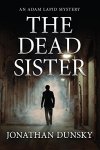“I knew he was an Arab the moment I saw him.” With these words, Jonathan Dunsky opens The Dead Sister, the second in a series of mysteries featuring Adam Lapid. They are pregnant with meaning, given that the story takes place in Tel Aviv in October 1949.
On May 14, 1948, Israel had declared independence. The next day, five Arab nations declared war on Israel, vowing to fight with and on behalf of Palestinian Arabs in order to erase the Jewish state. A U.N.-sponsored armistice ended the war on March 10, 1949.
In the aftermath of the war, approximately 700,000 Palestinian Arabs were displaced from their homes, an event they memorialize to this day as the Nakba(“Disaster”). A slightly larger group of Jews were expelled from their ancestral homes in the Middle East, most of them settling in Israel. Tensions continued to run high between Palestinian Arabs and Israeli Jews, many of whom had literally fought one another just months earlier.
So when Ahmed Jamalka asks Adam Lapid to solve the mystery of his sister’s murder, it’s not a foregone conclusion that Lapid will take the case. They had fought on opposite sides of the recent war, after all. But the case has languished in the hands of Tel Aviv police, who think the woman’s death is an honor killing. But larger forces are at work, and Lapid’s sense of justice drives him to follow the clues wherever they lead, whatever forces they offend.
And in the end, we discover, as Solzhenitsyn so famously put it: “The line separating good and evil passes not through states, nor between classes, nor between political parties either—but right through every human heart—and through all human hearts.” Arab andIsraeli.
 Book Reviewed
Book Reviewed
Jonathan Dunsky, The Dead Sister: An Adam Lapid Mystery(Charleston, NC: CreateSpace, 2016).
P.S. If you found my review helpful, please vote “Yes” on my Amazon.com review page.


2 thoughts on “The Dead Sister | Book Review”